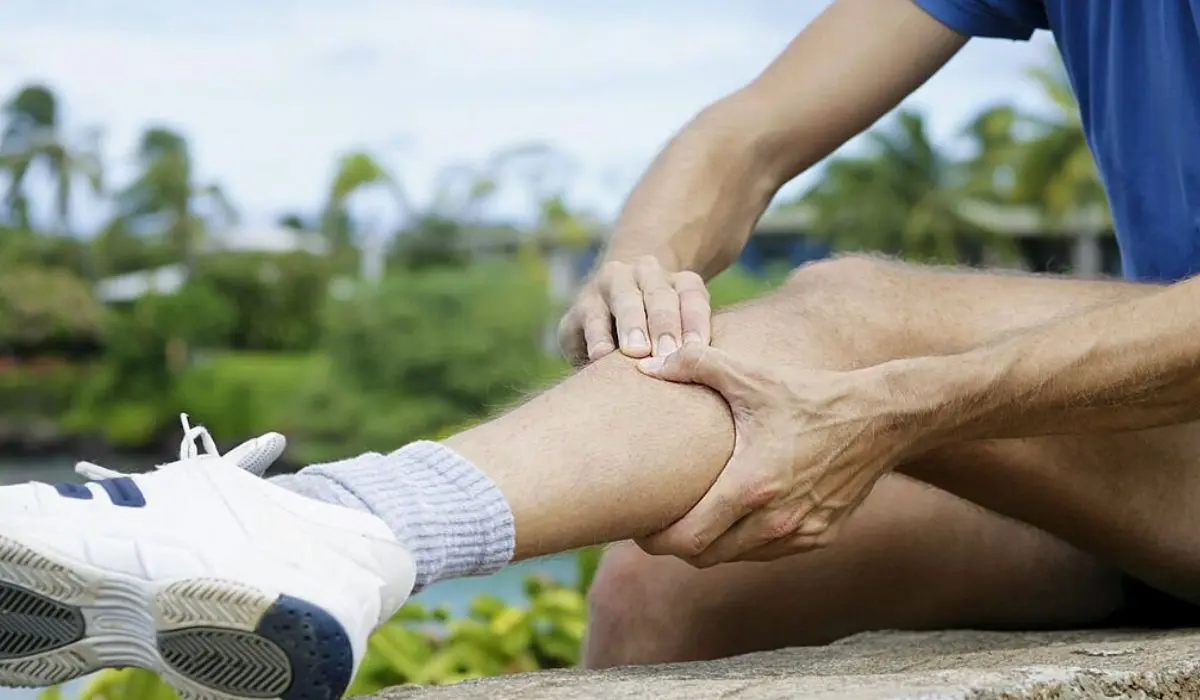Patellar tendonitis is common among athletes. In volleyball and basketball players, it is called a jumper’s knee. It is a common overuse injury caused by repetitive stress.
This can be a mild medical condition or a severe one that can even affect your career and you might have to take breaks from participating.
What Is Patellar Tendonitis In Athletes?
Patellar tendonitis can be defined as injury or swelling happening to the tendon that joins the kneecap and the shinbone together. In biological terms, the shinbone is referred to as the tibia, and the kneecap is referred to as the patella hence the term patellar tendonitis.
The tendon in the patellar region works in association with the front muscles of the thigh to facilitate knee extension. This is required when you run, jump, or kick.
Causes Of Patellar Tendonitis In Athletes
- Leg muscle tightening
- Uneven strength in the muscles of the leg
- Obesity and overweight
- Improper shoes (shoes that are not the right fit)
- Shoes that do not have sufficient padding
- Uneven playing surfaces
- Playing on hard surfaces
- Misaligned feet or ankles or both
- When legs are not in the right alignment
- A sudden increase in pressure applied to the legs
- Not getting enough rest
- Not returning to the game gradually
If you have taken a break from the practice and participation and are returning after a considerable amount of time, then you should not be laying at the maximum of your capacity. You should be progressing with time.
Symptoms Of Patellar Tendonitis In Athletes
When you have patellar tendonitis you can identify it.

The most common symptoms of patellar tendonitis:
- Pain below the kneecap
- Pain above the shinbone
- A dull ache in the knee cap area and the shinbone area
- A feeling of stiffness
- Difficulty in extending the knee
- Difficulty in bending the knee
- Pain gets worse with time
- More pain when you do specific activities
- Difficult to perform a squat
- Extreme pain when climbing down or climbing up stairs
- Difficulty in kneeling down
- Inflammation in the kneecap
- A burning sensation around the kneecap
- Difficulty in sitting in a car
- Tenderness in the back of the kneecap
How To Prevent Patellar Tendonitis In Athletes?
Patellar tendonitis can be prevented to an extent. For that, you have to start preparing early.
- Warm up before you start training
- Stretch well before every session
- Train following proper techniques that limit unhealthy strain
- Do strength building to strengthen thigh muscles
- Stop playing if you feel pain
- When you have pain when you do knee exercises, pause and ice the area
- Get proper rest
- Do not schedule hectic training sessions
- Until you feel relief from the knee pain do not engage in any activity that can put pressure on the patellar tendon
Also Read:- What Is PCL Tear Recovery Time Without Surgery? Quick Heal Guide
Treatments For Patellar Tendonitis In Athletes
When you are getting treatment, help your doctor by listing out all the signs and discomfort that you have.
✅ Rest
The first step is to rest. You have to get proper and enough rest when you are diagnosed with patellar tendonitis. You should reduce activities and movements that can put pressure on the knee. Do not stand for a long time.
✅ Ice
Ice the kneecap area to relieve the tension and pressure.
✅ Use Knee Support
You can use additional knee support such as a knee brace or a device that supports the knee.
✅ Medication
In case of severe pain you can follow medication, only the ones that are prescribed by your doctor.
✅ Sports Physiotherapy
Sports physiotherapy can reduce the pain and increase the rate of recovery. It will consist of massages, stretching, and heat treatments that are general and sports-specific.
✅ Surgery
In the worst cases, you will have to undergo surgery.
The Bottom Line
When you start to feel difficulty when you bend or extend your knees and when you can no longer climb the sitar or jump without pain in the kneecap and shinbone, then you might be suffering from patellar tendonitis. All the above-said symptoms can be also due to many other conditions, so it is important to diagnose whether what you have is this.
Patellar tendonitis not only happens to athletes but to anyone but athletes are in the high-risk category of suffering from it. It can be healed completely when you follow all the instructions from your physician and rest well.
Read More:- How To Heal A Hamstring Strain Fast? Treatment, Prevention & Recovery!
FAQs
Q. How do runners treat patellar tendonitis?
The runners have to stop running, rest and ice the injured part, and slowly return to running.
Q. What makes patellar tendonitis worse?
Not getting enough rest, still training, and participating in sports can make patellar tendonitis worse.
Q. Can you lift weights with patellar tendonitis?
No, you should not be lifting weights or any other activities that put pressure on the knee when you suffer from patellar tendonitis.